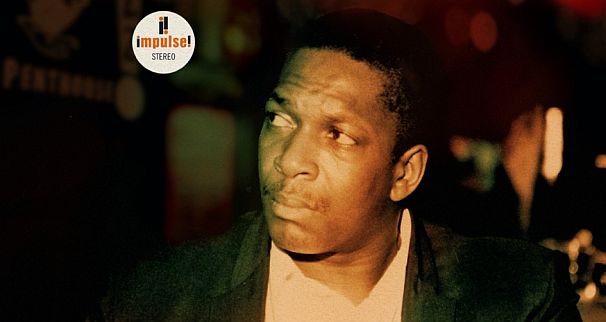Historic recording unearthed of Coltrane in full interstellar mode…

IMPULSE! RECORDS / UME 8th October, 2021
The duo of jazz albums anyone will recognise are Miles Davis’ ‘Kind Of Blue’ and John Coltrane’s ‘A Love Supreme’. Coltrane only played ‘A Love Supreme’ live twice and both were, for many years, only available on bootlegs. I always found the one played in Antibes in 1965 a little shrill and I’m pleased to report that this, on it’s first legitimate release, has been tweaked to sound listenable, if lacking in the sparkle of his studio work. It’s still obvious that this is a live recording straight to two track, off two microphones. This makes for extreme stereo separation but what you lose in stage presence, you gain in the ability to pick out instruments, which are mostly found in one channel or the other.
‘A Love Supreme’ came at a sweet spot in Coltrane’s career, where he was fully engaged in exploring and stretching melodies out into stellar regions but had yet to visit the audience-dividing regions of his later abstractions. At a mere 33 minutes, the studio release seemed a work in depth but here Coltrane and his band dig deep for 75 minutes. It’s a hell of a band. There is the original quartet (Elvin Jones on drums, McCoy Tyner on piano, Jimmy Garrison on double bass) plus Carlos Ward on alto sax, Donald Garrett on another double bass and Pharoah Sanders on yet another sax. Pharoah had been working on interstellar free jazz, so brought into the band, things were always going to get weird.
The studio album was recorded in late 1964, the Antibes concert in summer 1965 and this one in October 1965, by which time Coltrane was ready to show how far beyond the themes he was now travelling. Sourced from tapes held privately by a collector, this is the first listen in acceptable quality. Recorded with two microphones, both on stage, there is not a sense of space and it is more like early stereo studio records (piano on the left, drums on the right, etc). Sit up close to the speakers and your head gets nicely busy with all seven of the band playing busily.
Beginning with a bowed and plucked double bass duet (the band had two bassists) for a couple of minutes before picking up the theme, the audience reaction we’d expect today is absent and the band feel their way into the piece, noodling and twinkling. The band weaves through the first section for twenty minutes, with the bass responsible for repeating the theme every so often. Resolution (the second quarter of the piece gets fiery, with two or three saxes blowing and young Elwyn Jones keeping it all together but apart at the same time. The four quarters are separated by fully integral solos (the second is a six-minute drum solo). Persuance digs into some sax pain and if you slip outside the flow, you might hear a wounded goose. Me, I hear the man pulling his soul out on a tune and following a personal and anguished path. Everyone else keeps the motion going, particularly the drums and basses. Tyner gets a lengthy and athletic piano workout before a refreshing double bass palate-cleanser. Of the four portions of the composition, the most well known are the first (for the theme) and the last (for the sax-vocalised poem). This rendition of Psalm is wise and moving.
This is a must-hear for anyone who loves the original and Coltrane’s wider body of work. It ties the much-loved music to his onward journey into the far reaches of spiritual soun